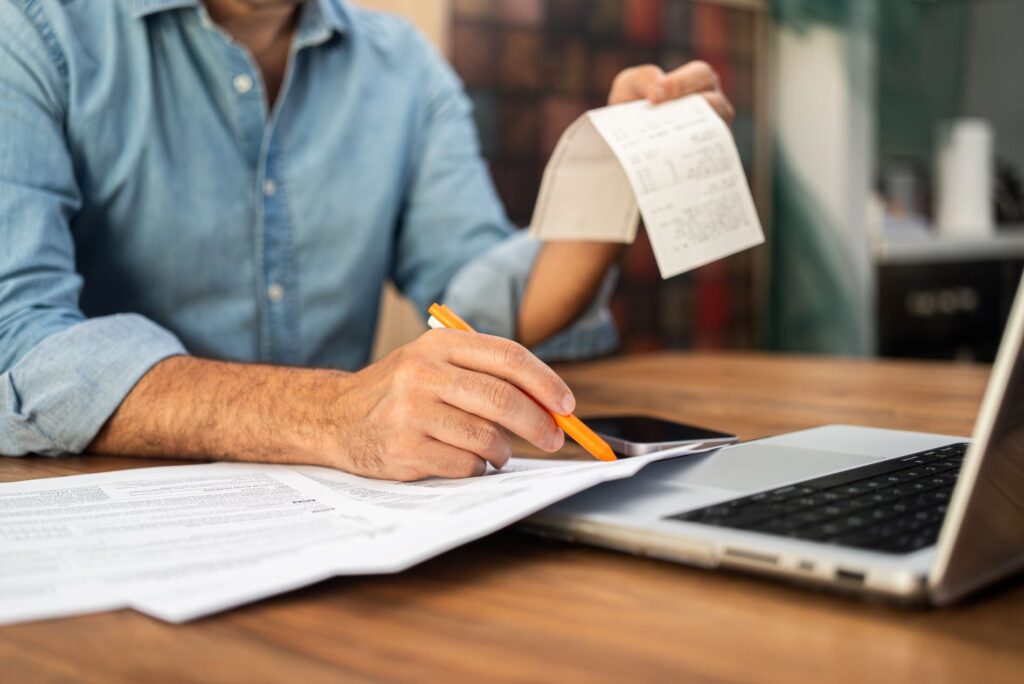If you’re a sole trader or limited company owner looking into a new laptop for your home office, you could be missing out on a generous tax break.
The Annual Investment Allowance (AIA) allows you to deduct the cost of qualifying equipment from your profits, potentially saving you thousands this tax season.
Yet, many solopreneurs and small business owners either don’t know it exists or assume it’s only for larger firms. In fact, it offers valuable tax relief for small businesses, especially those who work from home or cafés, who often need to buy new tech or furniture.
In this guide, we’ll break down what the AIA is, who qualifies, and how you can claim it.
What is the Annual Investment Allowance (AIA)?
The Annual Investment Allowance (AIA) is a tax relief scheme that allows businesses to deduct the full cost of qualifying purchases, such as equipment, machinery, or tools, when calculating their taxable profits, reducing the amount of tax they owe.
The annual limit of AIA is £1m, as of 2019, although it has fluctuated since its inception in 2008. Businesses can claim AIA on things like computers, office furniture, off-the-shelf software, and tools, as long as the total value is under the limit of £1m.
AIA can be claimed by sole traders, companies, and partnerships, where all partners are individuals.
How can solopreneurs benefit from the AIA?
How much you can save with the AIA depends on two factors: your tax rate and how much you spend on qualifying assets.
For example, let’s say a sole trader spent £10,000 on a new laptop, camera, and office furniture.
If they’re in the 40% income tax bracket, they can deduct the full £10,000 from their profits, which amounts to £4,000 in tax savings (40% of £10,000).
If they’re in the 20% tax bracket, they’d save £2,000.
By reducing your tax bill with allowances like AIA, you can keep more cash in your business, helping you to manage cash flow more efficiently.
When can’t you claim AIA?
You cannot claim AIA on business cars, things you already own, or items gifted to you.
Many freelancers and solopreneurs use items for both business and personal use, like a laptop. If this is the case, you may only be able to claim part of its value back with AIA.
It also matters when you claim, you can only claim AIA on items bought in the same accounting period. If you sell the items, you may have to pay the tax back, and if your business closes, you cannot claim AIA on any items bought in your final accounting period.
When you can’t use AIA, either because you’ve hit the £1m limit, the item doesn’t qualify, or you’re spreading the cost over time, you might be able to use other capital allowances.
These include the Writing Down Allowance (WDA), which spreads 18% or 6% tax relief over several years, or the First Year Allowance (FYA), which, like AIA, gives 100% relief upfront, but only for specific energy-efficient or green assets.
How to claim the Annual Investment Allowance
To claim the Annual Investment Allowance, you simply claim it as part of your self-assessment tax return or company tax return.
You’ll need to list all qualifying purchases in the capital allowances section. It’s important to keep all receipts, invoices, and records that accurately show what you bought, when, and for how much, as HMRC may ask for this evidence.
Good record-keeping is essential not just for claiming AIA but for staying compliant and avoiding penalties later down the line.
If you’re unsure whether something qualifies or you’re making a large investment, it’s wise to speak with an accountant to ensure you’re claiming correctly and also to make the most of available tax relief opportunities.



